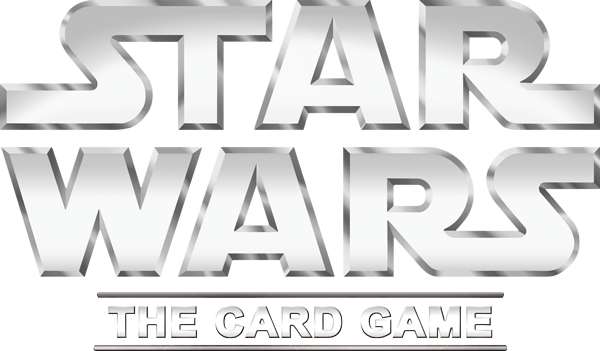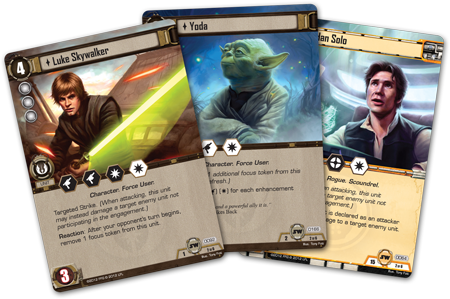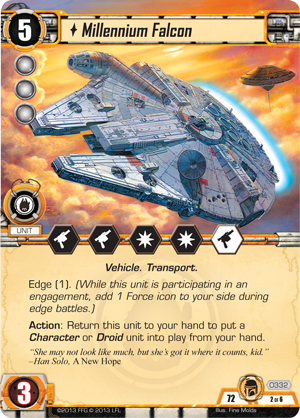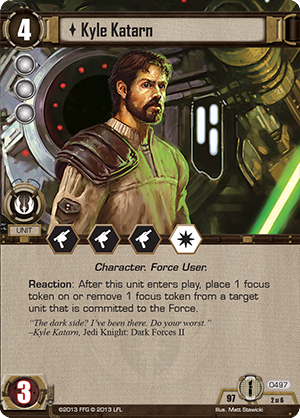
The Math Behind Mains
Guest Writer Matt Wehner Explores the History and Future of the Mains Deck

This is the weapon of a Jedi Knight. Not as clumsy or random as a blaster; an elegant weapon for a more civilized age. For over a thousand generations, the Jedi Knights were the guardians of peace and justice in the Old Republic. Before the dark times… before the Empire.
–Obi-Wan Kenobi, Star Wars: A New Hope
Star Wars™: The Card Game invites players to create decks and battle for the dark side or the light side in everybody’s favorite galaxy far, far away. Since the beginning of the game, a popular decktype has been the ‘mains’ deck. Throughout the game’s history, this deck has evolved to accommodate new cards, but it has maintained its competitive strengths. Today, guest writer Matt Wehner takes a look at the ‘mains’ deck – both where it has been, and where it may go in the future.
Everything Begins
During last year’s Regional season for Star Wars: The Card Game, a decktype known as Jedi Han emerged as one of the top light side decks in the yet undefined meta. The concept of the deck was modest: play Yoda (Core Set, 166), Luke Skywalker (Core Set, 92), and Han Solo (Core Set, 64) as your main units of attack and fill the remaining deck slots with cards focused on keeping them alive for as long as possible.

Both Yoda and Luke come with a helping of Jedi enhancements meant to make the powerful units even more powerful. In addition, Yoda’s objective – In You Must Go – allows your first enhancement played each turn to be deployed for one less resource. This reduced cost was vital to the deck, as many of the enhancements only cost one resource to begin with.
Rounding out the deck were the key inclusions of The Secret of Yavin 4 and A Message from Beyond. These objectives featured all the survival tricks the light side needed to help protect the three main units of the deck. Guardian of Peace (Core Set, 109) not only gives the Characters in the deck protection from damage, but also creates shields as an additional form of damage protection. A Message from Beyond contains two copies of Old Ben’s Spirit (The Desolation of Hoth, 179), which gave Yoda, Luke, and Han an easy way to avoid being destroyed.
Playing the deck correctly meant knowing to lead your early turns with smaller units like C-3PO and Guardians, which in turn would offer your mid-to-late game ‘mains’ protection from threats like Force Choke (Core Set, 59) and Force Lightning (Core Set, 60). While it may have seemed advantageous to lead with a powerful unit like Han, it was always more important to offer him the most amount of protection possible, so when he did finally hit the board he was that much harder to remove.
Necessary Modifications
 With the release of Edge of Darkness came the Millennium Falcon (Edge of Darkness, 332) and Han’s loyal friend, Chewbacca (Edge of Darkness, 319). The Jedi Han deck quickly evolved, as the Falcon created explosive turns for the light side and Chewbacca gave the deck additional forms of protection and damage manipulation. Many players at the 2013 National Championships were running the evolved Jedi Han deck of A Hero’s Journey, The Secret of Yavin 4, Questionable Contacts, Wookiee Life Debt, and Asteroid Sanctuary.
With the release of Edge of Darkness came the Millennium Falcon (Edge of Darkness, 332) and Han’s loyal friend, Chewbacca (Edge of Darkness, 319). The Jedi Han deck quickly evolved, as the Falcon created explosive turns for the light side and Chewbacca gave the deck additional forms of protection and damage manipulation. Many players at the 2013 National Championships were running the evolved Jedi Han deck of A Hero’s Journey, The Secret of Yavin 4, Questionable Contacts, Wookiee Life Debt, and Asteroid Sanctuary.
One of the key weaknesses to the original Jedi Han list was the lack of units (it typically totaled nineteen units, depending on the build). Since the deck essentially ran six ‘mains,’ it could disappoint in tournaments if a bad draw left the player unable to find the deck’s most potent units: Han, Luke, and Yoda. But in the new version, thanks to the addition of the Falcon and Chewbacca, the total number of ‘mains’ increased to eight, when running two copies of each objective.
Increasing the number of ‘mains’ within the decktype means greater odds of drawing potent units. While the deck still featured plenty of protection, a greater quantity of explosively powerful units meant the dark side had a tougher time consistently dealing with such threats. Thanks to the new quantity of ‘mains,’ piloting the deck also became easier, as the decisions a player had to make weren’t as complicated.
The realization that the quantity of ‘mains’ greatly affected the success rate for the light side led to my decision to play the Echo Base Defense objective set in my light side deck at the 2013 Star Wars World Championship. The Wilderness Fighters (The Desolation of Hoth, 188) possessed combat icons that could rival other ‘mains,’ but these units cost less. Three copies of Wilderness Fighters took the total number of ‘mains’ in the deck from eight to eleven. When a light side deck features a high quantity of units with multiple unit and blast damage icons, it will consistently deploy heavy threats that the dark side player must be prepared to deal with. The Top 16 of the Star Wars World Championships featured a handful of ‘mains’ decks, including my variation with Wilderness Fighters.
It Is the Future You See
 With the release of Heroes and Legends right around the corner, the ‘mains’ decktype will be given a significant objective set that will drastically change the math behind the deck’s concepts once again. The Heroes and Legends objective set features the fan-favorite Kyle Katarn (Heroes and Legends, 497), and in a meta-defining change, this objective set includes two copies of this ‘main’ and no other unit. Now, rather than having to run two copies of the same objective for your deck to feature two of a main unit, Heroes and Legends allows you to run just one. Moreover, you can run two copies of Heroes and Legends to include four total copies of Kyle Katarn in your deck.
With the release of Heroes and Legends right around the corner, the ‘mains’ decktype will be given a significant objective set that will drastically change the math behind the deck’s concepts once again. The Heroes and Legends objective set features the fan-favorite Kyle Katarn (Heroes and Legends, 497), and in a meta-defining change, this objective set includes two copies of this ‘main’ and no other unit. Now, rather than having to run two copies of the same objective for your deck to feature two of a main unit, Heroes and Legends allows you to run just one. Moreover, you can run two copies of Heroes and Legends to include four total copies of Kyle Katarn in your deck.
Heroes and Legends also features a free event card, Rahn’s Guidance (Heroes and Legends, 499), that greatly speeds the deck’s tempo for finding and deploying threats. Not only that, but the objective itself features key rewards for running multiple copies of a Character. The need to include protection for your Characters may diminish when you have four copies in your deck, as opposed to only two.
Though the Force Pack has not released yet, it is a safe assumption that Heroes and Legends, and likely the entire Echoes of the Force cycle, will drastically change the way the light side builds a ‘mains’ deck.
Thanks Matt!
Matt Wehner is an active member of the Star Wars: The Card Game community. Matt writes, creates videos, and records podcasts for his website, fliptheforce.com. Visit him there, and look for more Star Wars guest articles from Matt and others!
…
